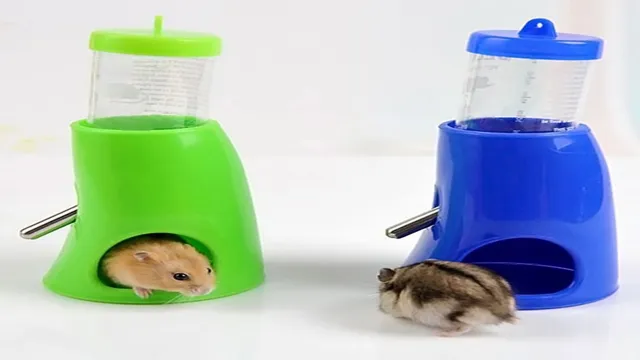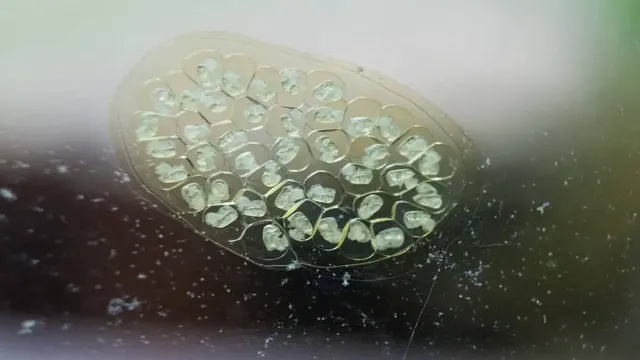If you’re new to the aquarium hobby, you might be struggling with high nitrite levels in your freshwater tank. Nitrites are harmful to fish and other aquatic life, causing stress, illness, and even death in severe cases. However, the good news is that there are several tried and true methods for lowering nitrites in your tank.
First, you’ll want to test your water to confirm that nitrite levels are indeed high. You can do this using a water testing kit, which you can find at any pet store. Once you’ve confirmed high nitrite levels, it’s time to take action.
One of the most effective ways to lower nitrites is by performing partial water changes. This means removing a portion of the water from your tank and replacing it with fresh, dechlorinated water. You should aim to change about 25% of the water every week.
This will help dilute the nitrite concentration and reduce stress on your fish. Another method for lowering nitrites is to reduce feeding and increase filtration. Nitrites are often caused by excess food and waste in your tank, so reducing the amount of food you add can help.
Additionally, you can increase your filtration by adding more filter media or using a more powerful filter system. A strong filter will help remove excess waste and reduce nitrite production. Finally, make sure your aquarium is properly cycled.
Cycling refers to the process of establishing beneficial bacteria in your tank that convert ammonia (a more toxic compound) into nitrite, and then eventually into nitrate (which is less harmful). If your tank is not fully cycled, nitrite levels may spike. Make sure you give your tank enough time to cycle before adding fish, and test the water regularly during this process.
Understanding Nitrites in Aquariums
Nitrites in aquariums can be harmful to aquatic life if their levels exceed a certain limit. High nitrites can lead to fish stress, illness, and death. Therefore, it’s important to know how to lower nitrites in freshwater aquariums.
One way to do this is through partial water changes. By changing around 20% of the aquarium water weekly, nitrite levels can be reduced significantly. Another method is to add nitrite-reducing bacteria, which convert nitrites into nitrates.
These bacteria can be added through commercial additives or by using live rock or sand. Maintaining the right pH level in the aquarium is also essential as high acidity can cause nitrite levels to rise. Regularly testing the water using a quality test kit can help detect spikes in nitrite levels so you can take immediate action.
Keeping the aquarium clean and well-maintained can prevent nitrite buildup and keep aquatic life healthy. By following these tips, you can keep nitrite levels under control and provide a healthy environment for your aquatic pets.
What Are Nitrites and Why Are They Dangerous?
Nitrites are a type of chemical compound that can be found in aquariums and are a common issue for fish keepers. They are produced as a result of the natural nitrogen cycle in which fish waste and uneaten food are converted into ammonia, which is then broken down into nitrites by beneficial bacteria. While nitrites are a necessary part of this cycle, high levels of them can be dangerous to aquarium inhabitants.
They can cause stress, illness, and even death in fish. This is because nitrite ions interfere with the ability of fish to take in oxygen, leading to suffocation. To prevent high nitrite levels in your aquarium, it is important to perform regular water changes and keep a close eye on the tank’s nitrogen cycle.
It is also a good idea to test the water regularly with a nitrite test kit to ensure levels remain safe for fish. By taking these steps, you can ensure the health and happiness of your aquatic pets.

Measuring Nitrite Levels in Your Aquarium
Aquarium, Nitrite Levels. If you have an aquarium, you need to keep an eye on the nitrite levels. Nitrites are harmful to fish and other creatures in your tank, so it’s crucial to understand what they are and how to measure them.
Nitrites are produced when bacteria break down ammonia, which is present in fish waste and uneaten food. Nitrites are highly toxic to fish, causing health problems and even death in extreme cases. So, monitoring your nitrite levels is essential to keep your aquarium inhabitants healthy and happy.
You can measure nitrite levels using a test kit, which is available at most pet stores. These kits typically use a chemical reaction to measure the nitrite concentration in your aquarium water. You should follow the instructions carefully and ensure that you test your water regularly.
If your nitrite levels are too high, you should take immediate action to reduce them. One way to reduce the nitrite levels in your aquarium is to perform water changes regularly. You should aim to change at least 15-20% of the water in your tank every week. (See Also: How to Filter Rainwater for Aquarium: A Complete Guide for Optimal Water Quality)
This will dilute the nitrites and reduce their concentration in the water. Additionally, you can add products that contain beneficial bacteria to the water. These bacteria will help to break down the nitrites and reduce their harm.
In conclusion, nitrites are hazardous to your aquarium inhabitants, and it’s crucial to monitor their levels regularly. Using a test kit and performing water changes can help to keep your aquarium healthy and happy. By taking care of your nitrite levels, you can enjoy a thriving aquarium community for years to come.
Causes of High Nitrite Levels
If you are experiencing high nitrite levels in your freshwater aquarium, the first step to fixing the problem is to understand the causes. Nitrites are a result of the natural breakdown of ammonia in the tank, which is produced by fish waste, uneaten food, and decaying plant matter. A high nitrite level can be harmful to your fish, causing stress and illness if left unchecked.
One way to lower nitrites in your aquarium is to perform frequent water changes and vacuum the gravel to remove any excess organic matter. Another option is to add beneficial bacteria to the tank, which will help break down the excess ammonia and nitrites. You can also consider adding live plants to the aquarium, as they can help absorb excess nutrients and provide a natural biological filter.
Additionally, make sure to avoid overfeeding your fish and overcrowding the tank, as this can contribute to higher nitrite levels. By taking these steps, you can help maintain a healthy and thriving freshwater aquarium for your fish.
Overfeeding and Overstocking
Overfeeding and overstocking are common causes of high nitrite levels in aquariums. Nitrite is produced by the breakdown of fish waste and uneaten food by beneficial bacteria in the tank. However, excessive amounts of waste and uneaten food can lead to an overload of bacteria, which results in high nitrite levels.
To avoid this issue, it’s important to not overfeed your fish and to maintain a proper stocking level in the aquarium. It’s recommended to feed fish small portions throughout the day, rather than one large meal, to ensure they consume what they need and not create unnecessary waste. Additionally, avoid adding too many fish to the aquarium at once, which can cause an imbalance in the tank’s ecosystem and lead to an overproduction of nitrite.
By properly managing feeding and stocking levels, you can maintain a healthy aquarium environment for your fish.
Poor Tank Maintenance
Poor tank maintenance can lead to high nitrite levels in aquariums which can be harmful to fish. There are several causes of high nitrite levels, but one major reason is neglecting to clean the tank and its filter regularly. When organic waste, excess food, and debris accumulate in the tank, they break down and produce ammonia, which is toxic to fish.
Nitrites are formed when beneficial bacteria that convert ammonia to nitrate haven’t established themselves in large enough populations to handle the ammonia production. Once nitrites build up, it can cause fish to become stressed, suffer from oxygen deprivation, or even die. Therefore, it’s essential to keep up with routine cleaning and water changes to prevent nitrite levels from reaching dangerous levels.
By regularly maintaining the tank, fish owners can create a healthy and safe environment for their aquatic pets to thrive.
Ways to Lower Nitrites in Your Aquarium
If you’re struggling with high levels of nitrite in your freshwater aquarium, there are a few ways you can lower them and keep your fish healthy. One of the easiest ways to reduce nitrite levels is to increase your water changes. Doing a weekly water change of about 25% can help dilute the nitrites in your tank.
Another method is to add live plants or use nitrite-reducing bacteria to help break down the nitrites. Additionally, make sure not to overfeed your fish as excess uneaten food can lead to an increase in nitrites. It’s also important to test your water regularly to monitor the nitrite levels and ensure they stay within a safe range.
With some simple adjustments to your aquarium maintenance routine, you can keep your fish happy and healthy while managing the nitrite levels in your tank.
Increase Water Changes
If you have high nitrite levels in your aquarium, one effective solution is to increase the frequency and amount of water changes you perform. By doing so, you can dilute the concentration of nitrites in the water, reducing their harmful effects on your fish and other aquatic life. Ideally, aim to perform a 20-30% water change every week, as this will help to maintain good water quality and keep nitrite levels in check.
However, if you’re just starting out and you’re still cycling your tank, you may need to do more frequent and larger water changes to keep nitrites under control. Remember to make sure you’re treating the new water with a dechlorinator before adding it to your aquarium to avoid shocking your fish. Additionally, consider using a nitrite remover or adding live plants to your aquarium, which can help to naturally reduce nitrite levels over time. (See Also: How to Apply Top Fin Aquarium Cling: The Ultimate Step-by-Step Guide for Beginners)
By taking these steps, you can ensure a healthy and thriving aquatic environment for your fish and other aquatic inhabitants.
Use a Good Filter System
When it comes to maintaining a healthy aquarium, one of the essential aspects to consider is the filtration system. A good filter system is crucial in removing excess waste and debris from the water, preventing the buildup of toxic nitrites. One way to lower nitrites in your aquarium is to ensure that your filter media is regularly cleaned and replaced, as clogged filters can reduce their effectiveness.
It’s also essential to choose the right type of filter for your tank size and the number of fish you have. Canister filters, for instance, are excellent for larger tanks and have multiple stages of filtration. Hang-on-back filters are suitable for small to medium-sized tanks and are easy to install and maintain.
By investing in a good filter system and keeping up with regular maintenance, you can keep nitrites at a safe level and provide a healthy environment for your aquatic friends.
Add Nitrate-Reducing Aquarium Plants
If you want to lower the nitrite levels in your aquarium, one great way to do it is by adding nitrate-reducing aquarium plants. These plants work by consuming the nitrates that are released during the nitrogen cycle, which helps to reduce the overall nitrite levels in your tank. Some great plant options for nitrate reduction include hornwort, anacharis, and java moss.
Keep in mind that adding plants to your aquarium also provides a natural habitat for your fish, helps to oxygenate the water, and can even improve the overall aesthetic of your tank. So if you’re looking for an effective way to lower nitrites in your aquarium, consider adding some nitrate-reducing plants to your setup.
Add Beneficial Bacteria to Your Tank
If you want to lower nitrites in your aquarium, one easy solution is to add beneficial bacteria to your tank. These bacteria can help convert harmful nitrites into less harmful nitrates, creating a healthier environment for your aquatic pets. You can introduce beneficial bacteria by using a bacterial supplement or by adding live plants to your tank.
Additionally, regular water changes and proper filtration can also help reduce nitrite levels. Just remember to be patient, as it can take time for the bacteria to establish themselves and lower the nitrite levels in your tank. By taking these steps, you can ensure a safe and healthy environment for your underwater inhabitants to thrive.
Preventing High Nitrite Levels in the Future
If you’re dealing with high nitrite levels in your freshwater aquarium, there are steps you can take to prevent it from happening again in the future. First and foremost, make sure you’re not overfeeding your fish. Overfeeding leads to excess waste and uneaten food, which can create a breeding ground for nitrite-producing bacteria.
Also, consider adding more plants to your aquarium. Plants are natural filters and help absorb excess nutrients that can lead to high nitrite levels. Additionally, be sure to perform regular water changes to reduce nitrate levels and keep nitrite levels in check.
Finally, consider adding a nitrite-neutralizing water conditioner to your aquarium to help prevent future spikes in nitrite levels. With these preventive measures in place, you can enjoy a healthy and stable freshwater aquarium for years to come.
Establish a Regular Maintenance Routine
One of the most effective ways to prevent high nitrite levels in your aquarium in the long run is establishing a regular maintenance routine. This includes routine water testing, partial water changes, and cleaning the filter regularly. By testing the water on a regular basis, you can keep track of the nitrite levels and act promptly if they start to rise.
Partial water changes, even just 10-20% every week, can help dilute any accumulating nitrites in the tank. Cleaning the filter not only prevents the accumulation of waste but also ensures that nitrite-eating bacteria have a clean environment to thrive in. Think of it like taking your car in for regular maintenance – by taking care of your aquarium regularly, you’ll be able to prevent any major issues from occurring down the road.
So, make it a habit to establish a regular maintenance routine and keep your fish happy and healthy for years to come!
Monitor Nitrite Levels Regularly
If you’re wondering how to prevent high nitrite levels in your aquarium, monitoring the nitrite levels regularly is key. Nitrite is toxic to fish, and if the levels get too high, it can lead to fish deaths. One way to keep the levels in check is by testing the water weekly with a nitrite test kit. (See Also: How to Make Air Pump for Aquarium at Home: DIY Guide for Aquarists)
If the levels are high, perform a partial water change and add an aquarium salt to help reduce the nitrite. Keeping the aquarium clean by removing any uneaten food or waste can also prevent nitrite levels from spiking. Remember, a little bit of prevention goes a long way in keeping your fish healthy and happy.
Avoid Overfeeding and Overstocking
When it comes to maintaining a healthy aquarium, it’s crucially important to avoid overfeeding and overstocking. These two factors play a significant role in keeping nitrite levels in check, which can have harmful effects on your aquatic pets. Overfeeding leads to excess food particles, which will break down and produce ammonia, nitrites, and nitrates, all of which can be harmful to fish.
This excess can ultimately lead to high nitrite levels that can cause serious harm, or even death, to your aquatic pets. To prevent high nitrite levels in the future, it’s important to be mindful of how much food you are feeding your fish and to remove any uneaten food promptly. You should also ensure that your tank is not overcrowded, as overcrowding can lead to an increase in waste produced, which can lead to high nitrite levels.
By taking these simple preventative measures, you can help ensure the health and wellbeing of your aquatic pets for years to come.
Conclusion
In the world of freshwater aquariums, nitrites can be a pesky problem for fish and their owners alike. But fear not, there are a few tried and true methods for ridding your tank of these pesky compounds. First, make sure your filtration system is up to snuff and keep a watchful eye on your feeding habits.
Don’t skimp on water changes, and consider using helpful bacteria like BioSpira to give your tank a boost. With a little bit of effort and diligence, you can lower your nitrites and keep your fish happy and healthy. Just remember, in the world of fishkeeping, the key to success is to stay vigilant and not let those nitrites get the better of you!”
FAQs
What causes high nitrite levels in freshwater aquariums?
High nitrite levels in freshwater aquariums are often caused by overfeeding, overstocking, and inadequate filtration. Nitrite is a waste product produced by fish and other aquatic organisms, and if not removed by biological filtration, it can accumulate to dangerous levels.
How can I test for nitrites in my freshwater aquarium?
Nitrite test kits are available at most pet stores and online retailers. Simply follow the instructions included with the kit to obtain an accurate reading of the nitrite levels in your aquarium.
Can plants help to lower nitrite levels in my freshwater aquarium?
Yes, aquatic plants can help to lower nitrite levels in freshwater aquariums by absorbing nitrates and other waste products produced by fish. Additionally, live plants can also help to provide oxygen and improve water quality.
What is the best way to lower nitrite levels in my freshwater aquarium?
The best way to lower nitrite levels is to perform frequent water changes, increase biological filtration, and reduce feeding and stocking levels. Additionally, adding live plants and using chemical filtration media may also be helpful.
Is it safe to use nitrite-removing chemicals in freshwater aquariums?
While nitrite-removing chemicals can be effective at reducing nitrite levels in freshwater aquariums, they should be used with caution. Overuse of these chemicals can lead to imbalances in the aquarium’s ecosystem, and may harm beneficial bacteria and other aquatic organisms.
Can high nitrite levels harm fish in my freshwater aquarium?
Yes, high nitrite levels can be toxic to fish and other aquatic organisms, and can cause a range of health problems, including reduced immunity, stress, and even death. It is important to monitor nitrite levels regularly and take action to reduce levels if they become too high.
How long does it take to lower nitrite levels in a freshwater aquarium?
The time it takes to lower nitrite levels in a freshwater aquarium can vary depending on the severity of the problem and the actions taken to address it. Generally, it can take several days to several weeks to see a significant reduction in nitrite levels. Consistency and patience are key when attempting to lower nitrite levels.







